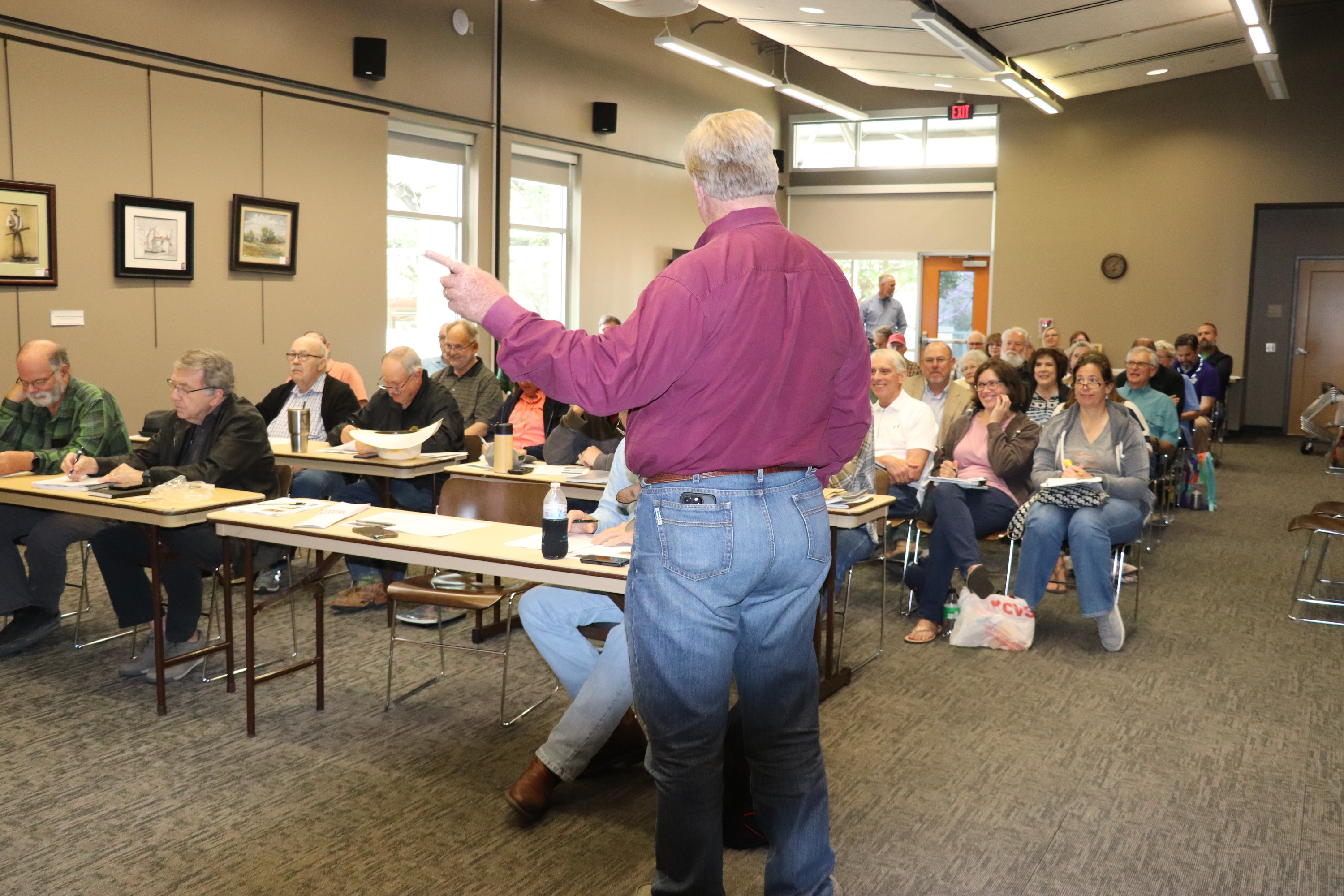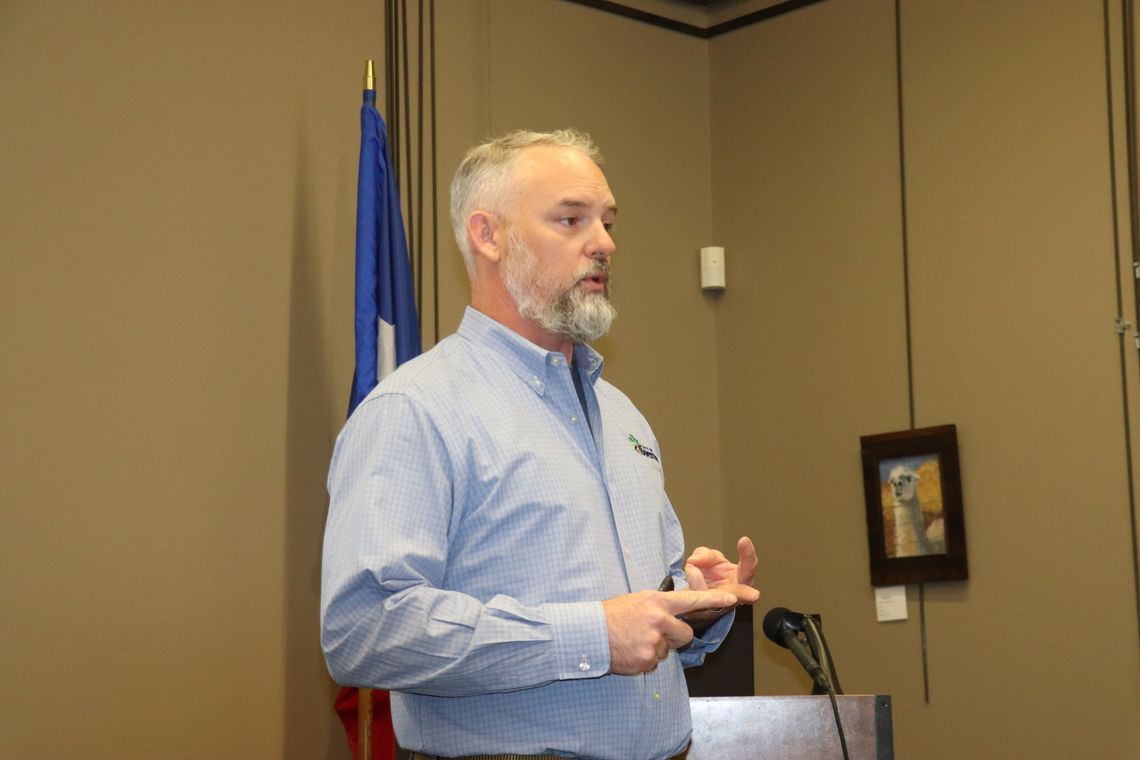When it comes to drought, Boerne’s Ryan Bass and Texas A&M’s John Smith can’t alter weather patterns, but they do have a few answers for those wishing to save dollars, save water and help the environment Rainwater harvesting. Smith, extension program specialist with the Texas A&M Soil and Crop Science Department, joined Bass in a presentation Thursday at Heath Public Library focusing on the benefits of rainwater harvesting and how it can aid county residents in times of drought. The drought has been a real problem for the area, Bass said, alluding to a chart that shows Kendall County in extreme or exceptional drought range. “Since March 2022, we went into the extreme drought category and have not gotten out of it. Most of that is in the ‘exceptional’ drought category,” said Bass, the city of Boerne’s environmental program manager. “You’re rolling the dice on are we going to get some good rain this year.”
Add in recent hard freezes “and our turfgrass and our trees have really taken it on the chin,” Bass said.
“That’s where this rainwater component can come in,” he said, “to try to help you supplement your irrigation needs at your house, and not have to be dependent on your utility water or your well.”
Smith said as much as 60-70% of average daily water use is outdoors watering yard and gardens, washing cars, etc.
“I’m not saying not to use the water here is a natural resource, just use it wisely,” Smith said.
Smith said he was amazed by a chart that shows water leaks accounting for 6% of all daily water use.
“We need to do the very best that we can to be the best stewards of that water,” Smith added.
The library conference room was full of individuals either wanting to know more about rainwater harvesting, or wanting to find out how to improve upon systems they already have in place.
Smith operates the Healthy Lawns and Healthy Waters Program for Texas A&M, which aims “to improve and protect surface water quality by enhancing awareness and knowledge of best management practices for residential landscapes.”
At workshops such as the well-attended Boerne event, attendees learn about the design and installation of residential rainwater harvesting systems and appropriate turf and landscape species based on local conditions.
“From I-35 west all the way to the Panhandle and in south Texas, you don’t have to sell people on the importance of water,” Smith said. “Folks come to this because they have interest in putting (a rainwater system) in.”
A 600-gallon system is the normal size for most people.
“The interesting output ... is that it’s over 600 gallons per system when they choose to put it in, which is pretty significant,” he said. “Rainwater harvesting can cut into that demand while lessening a homeowner or property owner’s demand ... and cost.”
Smith reviewed many of the benefits of rainwater harvesting: rainwater is superior quality, with zero hardness, it’s sodium-free, and a nearly neutral pH factor.
Harvesting can reduce stormwater runoff and reduce pollutants entering waterways. It reduces reliance on water suppliers, eliminating the high cost of water, especially during summer months.
Bass introduced a program that promotes residential irrigation system consultations.
“We’ll send an irrigation technician, a licensed irrigator, to your home,” Bass said. “They’ll fire up your system, look for leaks, look for broken heads, make sure your settings are set to make sure your duration of watering is correct.”
The homeowner receives a final report on how the system is operating. The San Antonio Water System, he said, has a similar program in place throughout its service area “that has saved a tremendous amount of water in their utility, by getting out and making sure these smaller residential systems are operating properly.”








Comment
Comments